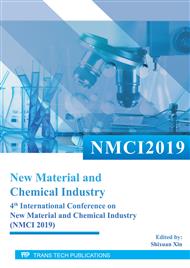p.3
p.10
p.16
p.22
p.28
p.36
p.47
p.55
Macroscopic and Microscopic Mechanical Properties of HTPB Coating in Solid Rocket Motor under Cyclic Tension
Abstract:
Hydroxyl-terminated polybutadiene (HTPB) coating is continuously affected by environment/load spectrum during storage, and its macro and micro mechanical properties will deteriorate. Therefore, the cyclic tension test of HTPB coating was carried out with the elongation of HTPB coating was 5%, 10% and 15%, the tensile rate was 50mm/min, 100mm/min and 500mm/min, respectively, and the tensile times was 1000, and the macro and micro mechanical properties of the samples after cyclic tension were tested. The results show that the maximum stress that can be reached by each cyclic tension decreases with the increase of cyclic times, which proves that stress relaxation occurs. After cyclic tension, the tensile strength and cross-linking density of HTPB coating decrease with the increase of elongation and raise with the increase of tensile rate. There is a good linear correlation between cross-linking density and tensile strength.
Info:
Periodical:
Pages:
10-15
Citation:
Online since:
May 2020
Authors:
Price:
Сopyright:
© 2020 Trans Tech Publications Ltd. All Rights Reserved
Share:
Citation:


